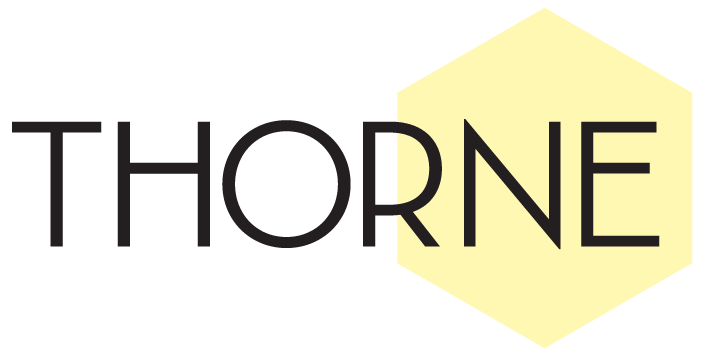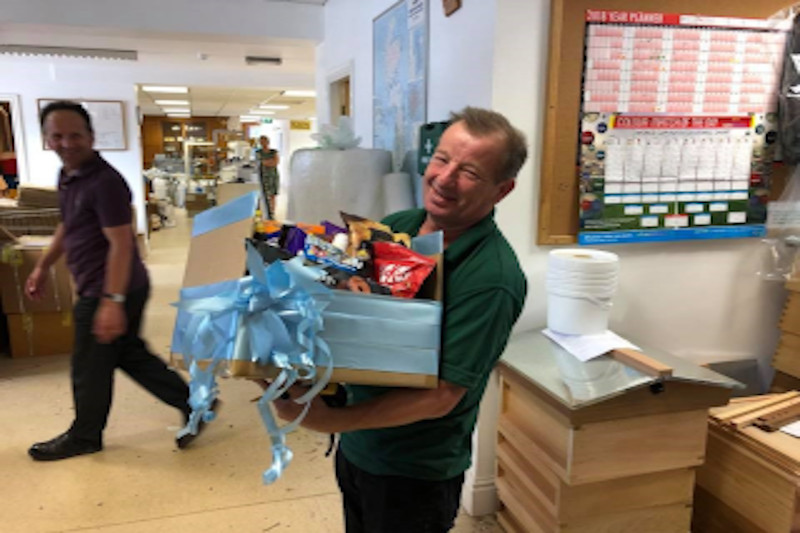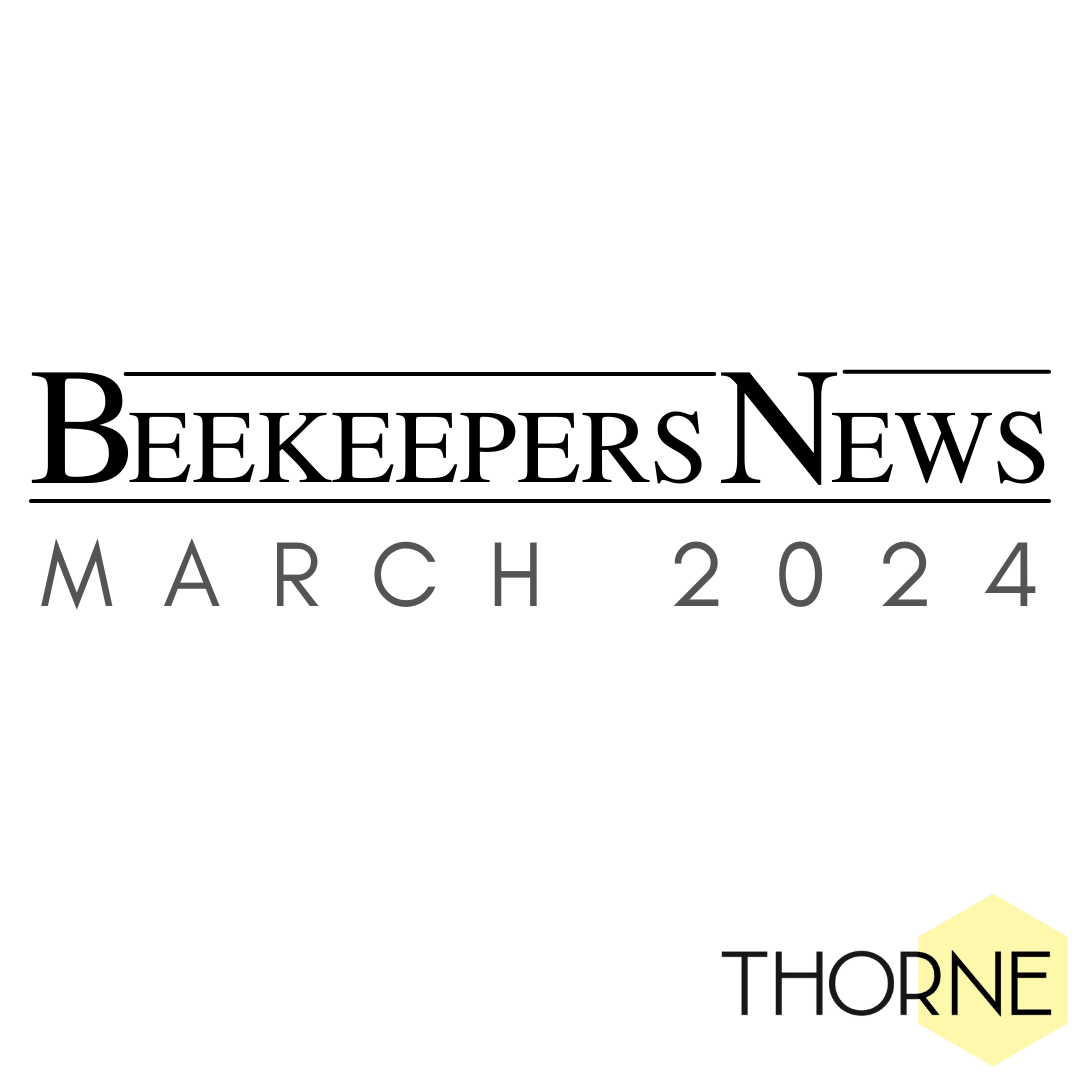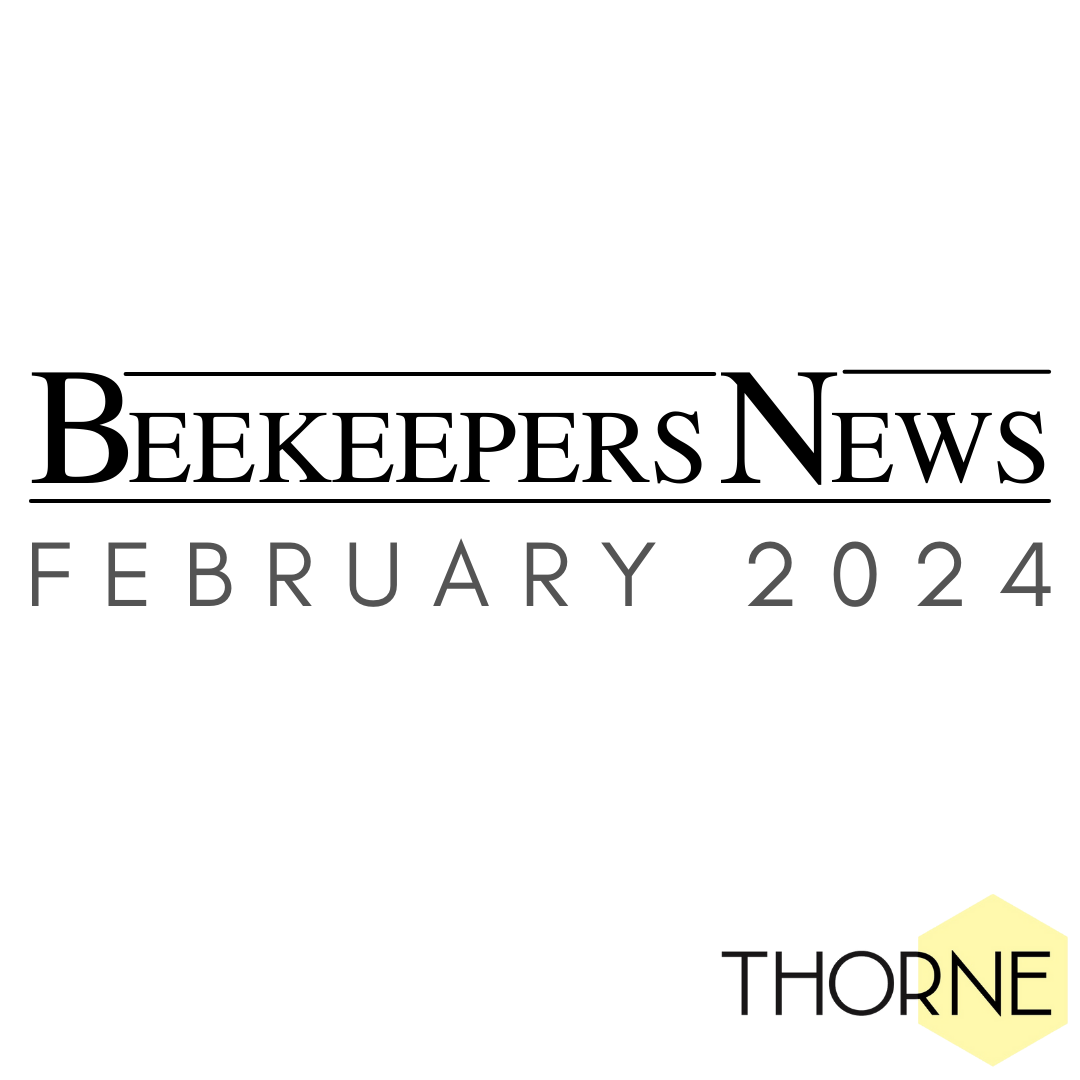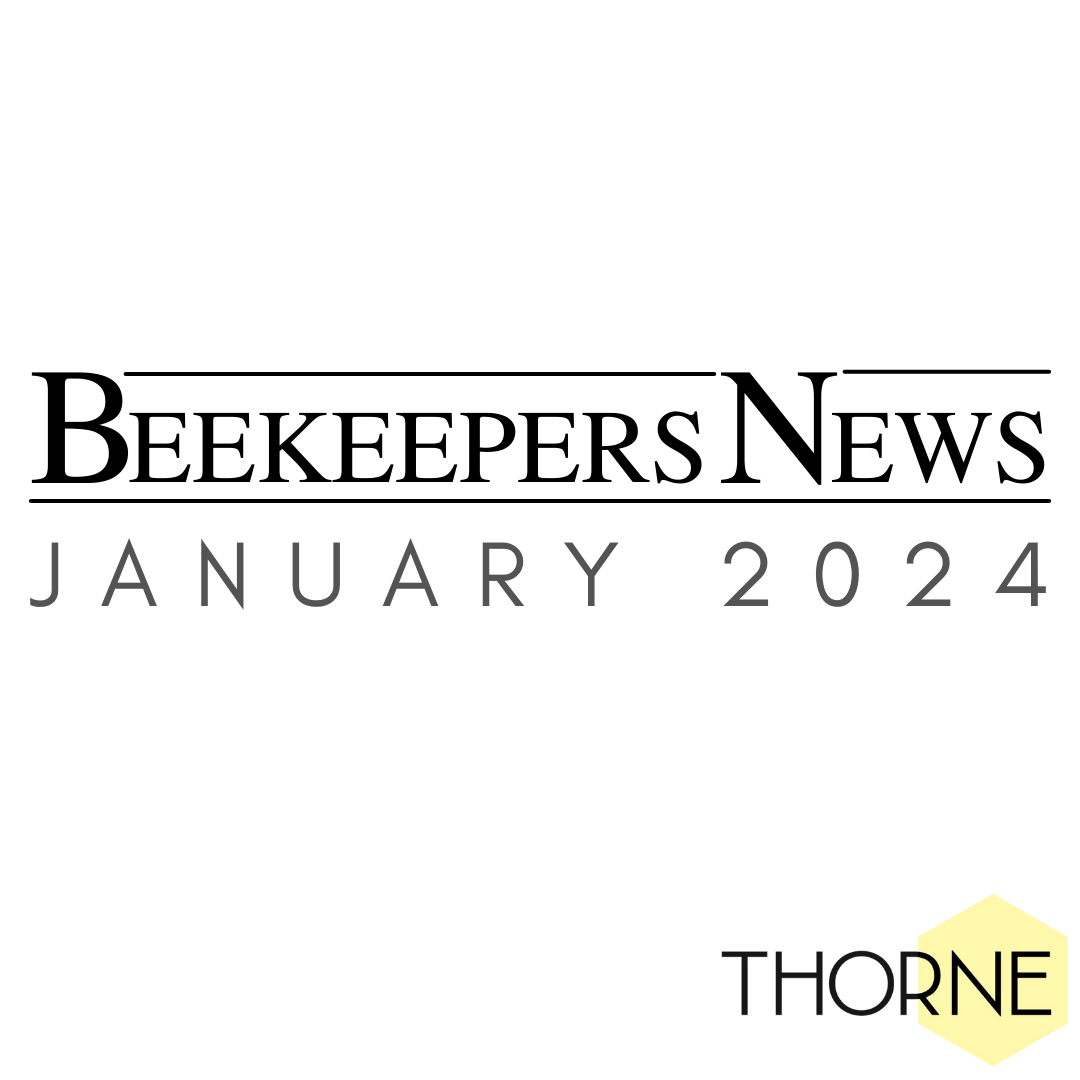June Roundup
Goodness, what a lovely sunny and hot month we have had – but I think you will all agree that a little rain would be welcome right now.
The bees were busy despite the really dry June and the evident June gap towards the end of the month. Now, early July, the more traditional summer forage is coming into play.
Limes are yielding well as too are blackberry. Much clover has finished but temperatures were good for it to yield whilst it was in flower.
Rosebay Willow Herb is also just showing pink in areas around our lakes.
Please make sure there is an accessible water supply for your bees. We do sell a very handy water feeder, for just £1, if you are worried. Simply insert the feeder directly into the hive entrance to give an immediate water source. Feeder fits most disposable water bottles.
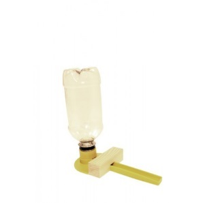
Although we had a very busy month we did have time to wish Colin, our Despatch Supervisor, a very happy birthday – many happy returns Colin.
Equipment Focus………
Thornes Honey Extractors
We have been making our own brand of honey extractors since 1970 and are now the only manufacturer of such machines in the UK.
In 1970 many honey extractors available were made of tinplate or Monel metal (a nickel/copper alloy), neither were particularly hygienic materials and are in fact not approved for use today. Moulding techniques in plastic were improving all the time so we decided to introduce a range of small, hobby machines that were affordable and hygienic.
We introduced the Heavy Duty polypropylene model first in a radial or tangential format, either manual or electric. This was called the Universal Range as the machines would accommodate all sizes of commonly used shallow frames at the time. With the use of three screens it was possible to then extract all brood frames tangentially. This was before 14x12 frames were in common use. The Heavy Duty machine proved very popular and affordable. It was easy to clean and store and was not susceptible to frost so could be kept over the winter in a shed or garage.
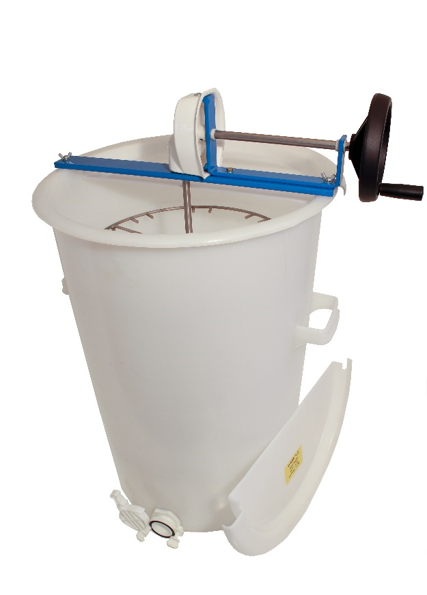
There followed a couple of years later a new model which we called The Lightweight Universal. This was exactly the same spec. as the Heavy Duty, but less expensive and just as easy to clean. This version though is susceptible to frost damage so must be stored in a frost free environment. Both ranges of extractors in electric mode would easily cope with honey from 30 or 40 hives. Both versions of the extractor had plastic coated steel cages and screens which were also easy to clean, although propolis tended to stick to the plastic coating. Latterly of course all inside parts are now produced in stainless steel.
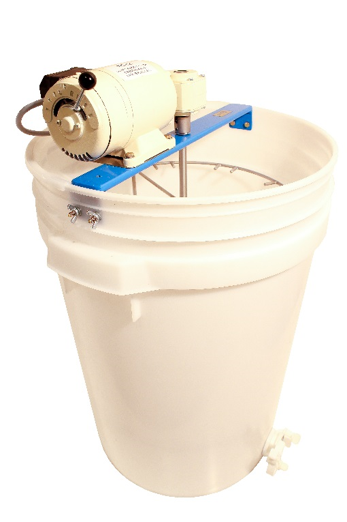
There was a demand though for an even smaller machine, for the two or three hive beekeeper. This we called The Table Top (accommodates four BS Shallow/Manley or two BS Deep frames) and this has probably been our most popular extractor by far. It’s stainless steel mesh cage and absence of a central shaft meant that frame turning was a very simple process as top bars just swivelled on their axis. The machine was quite small so storage was a lot easier, it was also very light and could easily be lifted on to a bench or table, hence the name.
The Table Top is also available in Langstroth, Dadant and Commercial frame sizes.
There are thousands of these machines still in use today and spare parts are available for all models.
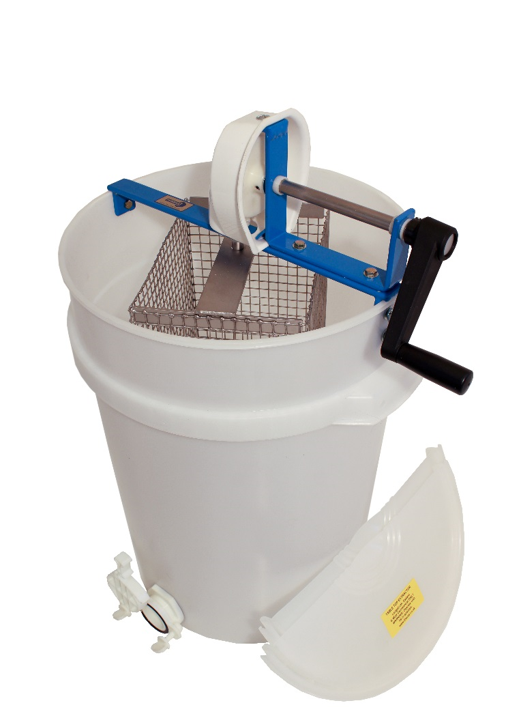
We also produce a separate extractor stand which accommodates all the Universal range of extractors and indeed the Table Top extractor.
The older Klaxon/Comtex/Parvalux models of electric motors however cannot be replaced. Our current RM motor, will though, fit the Universal Extractor range quite easily. We regularly refurbish old extractors whether they are of our manufacture or Thomas, Lega or Fritz. We have the experience and know- how of almost fifty years of extractor production.
We thought it would be interesting to show you how the Table Top extractor goes together.
We make all the extractor’s constituents parts except the barrel, valve, handle and gears.
After drilling out the holes for the top bar and valve, the nylon base is fitted to the bottom of the barrel.
All fixings, bars and cages are made from stainless steel. The cage is welded together and fixed to stainless steel bars to make a base (for the frames to rest) and a bar across the top.
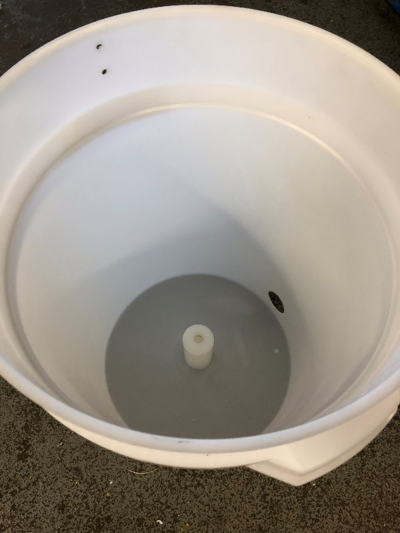
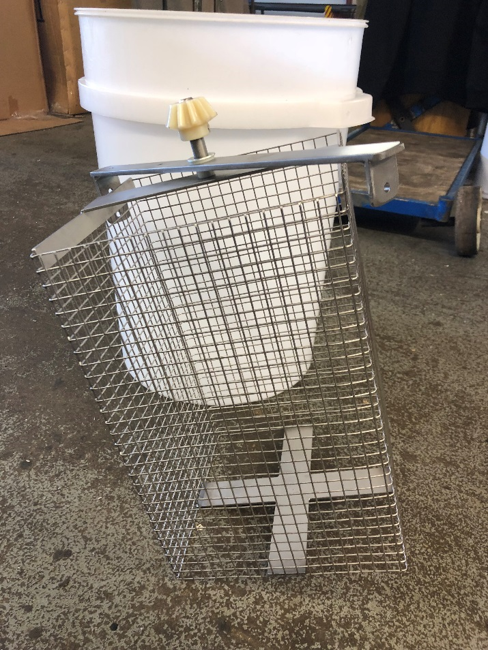
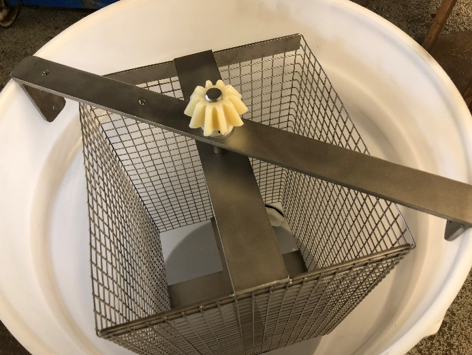
The cage is carefully located on to the nylon base and the top bar screwed into the top of the barrel.
The top bar and one half of the gearing mechanism are fixed in place.
The final part of the gearing mechanism and the handle shaft are then added and a guard (vacuum formed here at the factory at Rand) is attached to shield the gears.
Everything is given a final tighten and thoroughly checked. The handle and lids are then added and the extractor is ready to go!
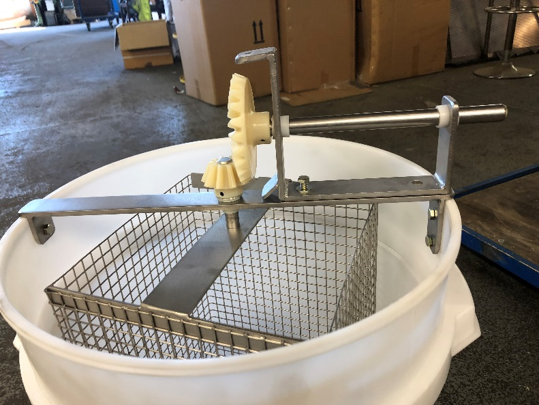
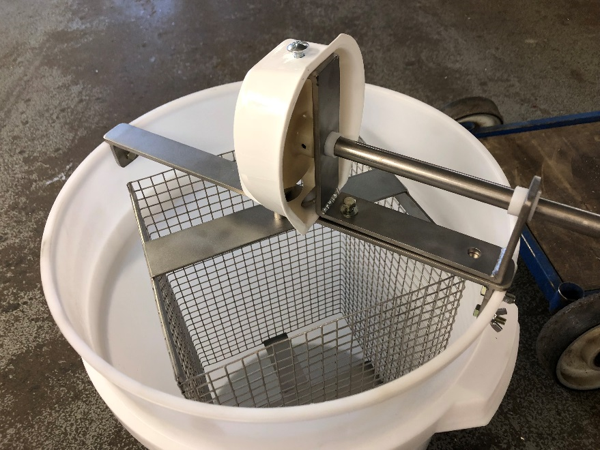
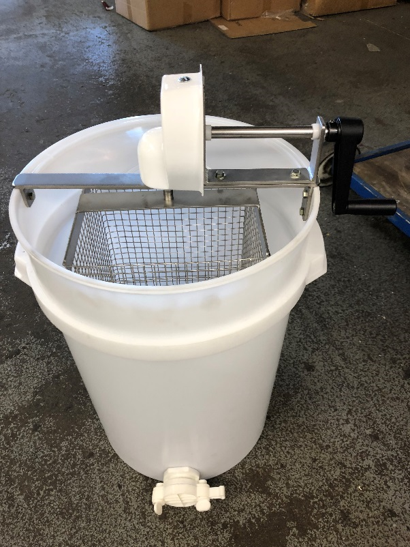
Ask our Expert
Rape and Ivy Honey – how do you process it??
Both Oil Seed Rape and Ivy produce honey that granulates rapidly. Once these kinds of honey are in your comb any residual trace tends to “seed” subsequent nectar and cause it to granulate in a similar way. The combs of set honey can be fed back to the original bees by uncapping the frame and soaking it in fresh rain water. The bees will take it down but it will contaminate other frames and defer the problem.
The only way to get either of these set honeys out of your comb is to melt down the comb and honey recovering both wax and honey. I use a Pratley tray or Standard uncapping tray (the thermostatic version makes the job easier). I cut the set honey out of the frame and stack it on the tray, set to around 65ᵒC/70ᵒC (Bees wax melts/gels at 64ᵒC) the mixture of wax and honey flows down the tray and vents out of the spout into a Honey/Wax Separator; this device is a bit like a beefed up gravy separator, the mixture pours into the central large chamber, the wax floats to the top above the honey, a baffle in the separator allows the honey to flow round into a smaller chamber from which there is a spout allowing the honey to pour into a collecting bucket. The wax builds up in the central chamber and flows from a higher spout into another collecting bucket if required.
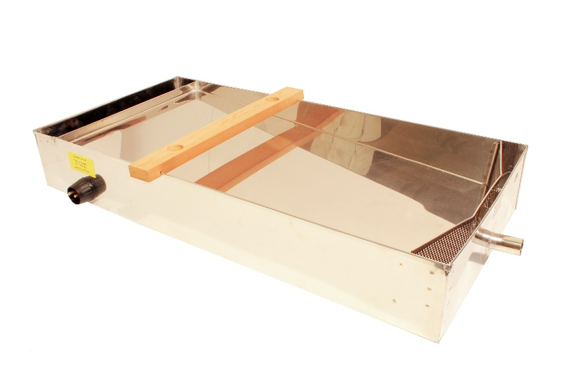
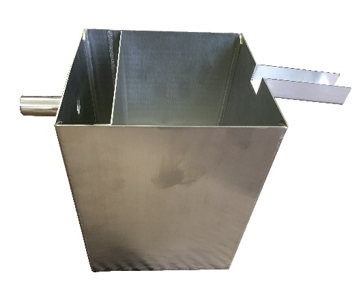
Honey over time produces HMF (Hydroxymethylfurfural) as a result of the breakdown of fructose in the presence of an acid. The speed with which this reaction proceeds is increased by temperature. Honey held at an ambient temperature of 30°C for 6 months will accumulate as much or more HMF than a similar sample of honey quickly heated to 70°C for 5 minutes and then cooled.
HMF is limited to 40 mg/kg in general (except baker’s honey, which is exempt), and 80 mg/kg in honey declared to be from a tropical region. There is a very useful graph and table in Ron Browns book “Honey Bees a guide to management” this states the following:
Days at Temperature
20 41ᵒC / 106ᵒF
10 44ᵒC / 111ᵒF
6 48ᵒC / 118ᵒF
3 52ᵒC / 126ᵒF
1 60ᵒC / 140ᵒF
12hrs 65ᵒC / 149ᵒF
6hrs 70ᵒC / 158ᵒF
Time taken to reach 30mg HMF in 1kg of Honey
(After White, Kushir and Subens , 1964)
Taking the honey above this highest temperature will destroy the natural enzymes that invert the sugars. You will find that the honey will still granulate when stored in the bucket after this process, if you haven’t damaged it. When this honey granulates again, you may need to warm it again but only for 24hrs at around 40ᵒC. Bear in mind that the effects are cumulative, so you should minimise the exposure to heat.
Beekeeping Blog
June
June has been a busy month for us here at Rand in Lincolnshire, with more hot weather for the bees to enjoy. At the beginning of the month we made up some nice nucs for our customers, so we hope everyone is happy with them.
Of course, at this time of year we expect a certain amount of swarm activity. One warm morning whilst out with the bees, a loud buzzing noise came to our ears. We looked up and saw a swarm moving into our empty top bar hive! This was very exciting. Since then, we have had a peek inside and seen that they are building nice, wild comb on the underside of the top bars.
This month we also harvested any extra queen cells from hives that didn’t need them and transferred them into mating nucs with a handful of bees. From the picture below, you will be able to the see the light coloured Nasonov glands of the bees who are fanning with their back ends in the air. By doing this they spread a pheromone around attracting other members of their colony to that location. It can also indicate that there is a queen inside – which on inspection, there was!
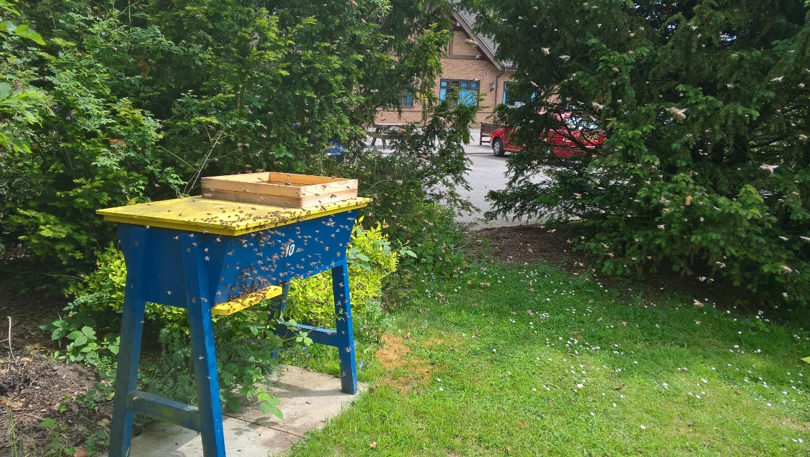
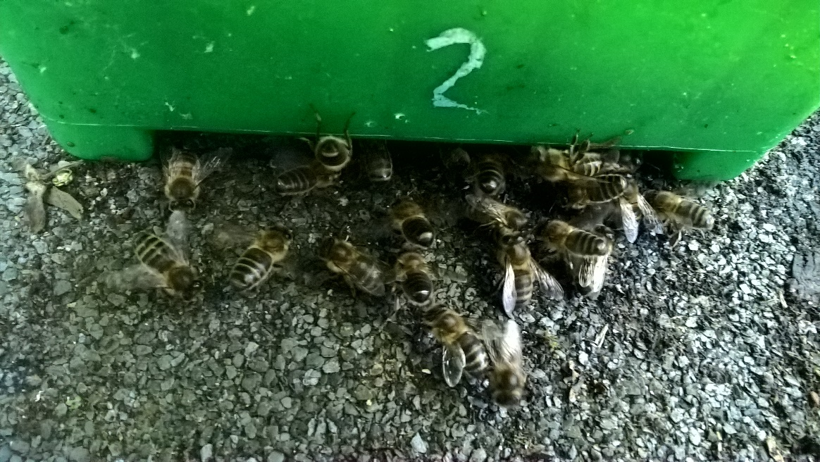
Everything is going well so far and next month we will be consolidating the work we have done this month to make sure all our colonies are queenright and strong going into Autumn.
If you require any more information, please send an email to Alexandra at sasha@thorne.co.uk who will be happy to help or call one of our sales team on 01673 858555.
Bees for Development Update
Have you been taking honey supers off your bees? Have you found yourself wishing that that your hives were not located so inconveniently far from your car, or kitchen or honey shed? Or even struggled over a fence wondering whether you should drop the super over the fence first - or climb over the fence – then try and retrieve the super?
In Zambia beekeepers harvest honey deep in the forests where the best nectar trees are found. Beekeeper Pathias Ngolofwana carried 45 large buckets of honey across the Lunga river in this canoe (see image) last season – 8 buckets at a time. Each bucket contained 25 Kg of honey. He then took them 2 at a time on his bike for a further 10 km through forest tracks. And beekeepers like Pathias say they harvest honey because “it is an easy job”!
Bees for Development works with beekeepers in many different countries, always listening to their constraints and challenges. Sometimes our work concerns training, elsewhere the issue might be marketing. In Zambia beekeepers are most concerned now about land use issues. As mining, logging and charcoal-burning increase relentlessly, beekeepers are calling for help to maintain their forests.
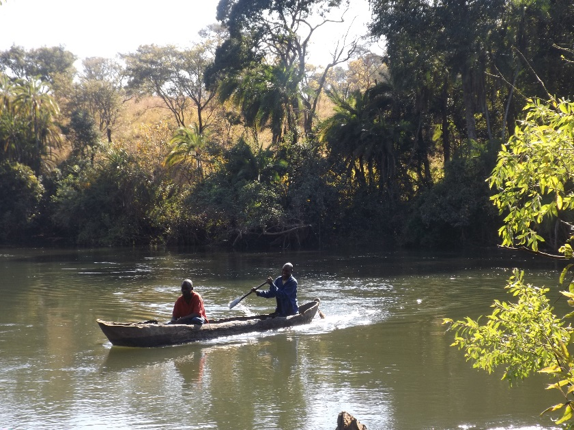
Bees for Development works to highlight the benefits of forest beekeeping for livelihoods and the environment. And if you ever run short of your own honey – try a jar of organic Zambian honey and reflect on the good you are doing for poverty alleviation, bees and forest conservation, and climate change (forests = carbon).
What can a UK beekeeper do during the dark, lonely month of November?
Go on Beekeepers' Safari to Ethiopia, especially arranged by Bees For Development!
see http://www.beesfordevelopment.org/ for details
We are looking forward to welcoming BfD Patron Professor Tom Seeley from Cornell University and Megan Denver, who has established Bees for Development North America, to our headquarters in Monmouth this month.
To celebrate their visit, our adventurous Birthday Giveaway prize for July is the book Following the Wild Bees - The craft and science of bee hunting by Tom Seeley, together with a Bee Hunting Box donated by Hudson Valley Bee Supply. Watch the video at the link below and Tom Seeley will show you how to use it! This special copy of Following the Wild Bees is signed by Tom Seeley and Megan Denver - who designed the book and provided photographic support for its publication. For your chance to begin Following wild bees, follow first this link:
http://www.beesfordevelopment.org/giveaway/index.html
National Honey Show News
We're hearing reports of some good early crops in spite of the recent dry weather. Hope this continues and no doubt you're starting to think about entries for this year's Show. The schedule of classes for this year's show will be going live on the website very soon, and entry forms can be sent in to Jill, our entries sec, from 1st August. Please remember: the deadline for entries for the early classes is 10th September. The early classes 95 to 102 include photography, microscopy, videos and essays. This includes the new class 101 for a clip on a beekeeping subject max 30 secs.
If you can't get to the show yourself to bring your show entries, remember there are various volunteers around the country, including all the Thornes Shops and Northern Bee Books in Yorkshire. Or you can ask around within your local or neighbouring associations as to whether anyone else might be going and able to take a few extra entries.
It will be another great show: look forward to seeing you there.
The National Honey Show, 25 to 27 October 2018, Sandown Park Racecourse, Esher, KT10 9AJ www.honeyshow.co.uk.
Upcoming Events
Sale items to order for collection at the branch sale days and National Honey Show are live on our website – www.thorne.co.uk Wednesday 25th July
Scotland Sale Days Friday 10th and Saturday 11th August
Windsor Sale Day Saturday 8th September
Stockbridge Sale day Saturday 15th September
Devon Sale Day Saturday 29th September
Rand Open and Sale Day Saturday 13th October
